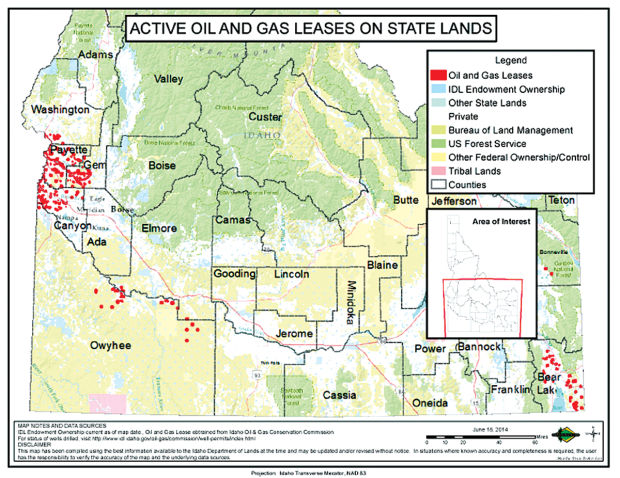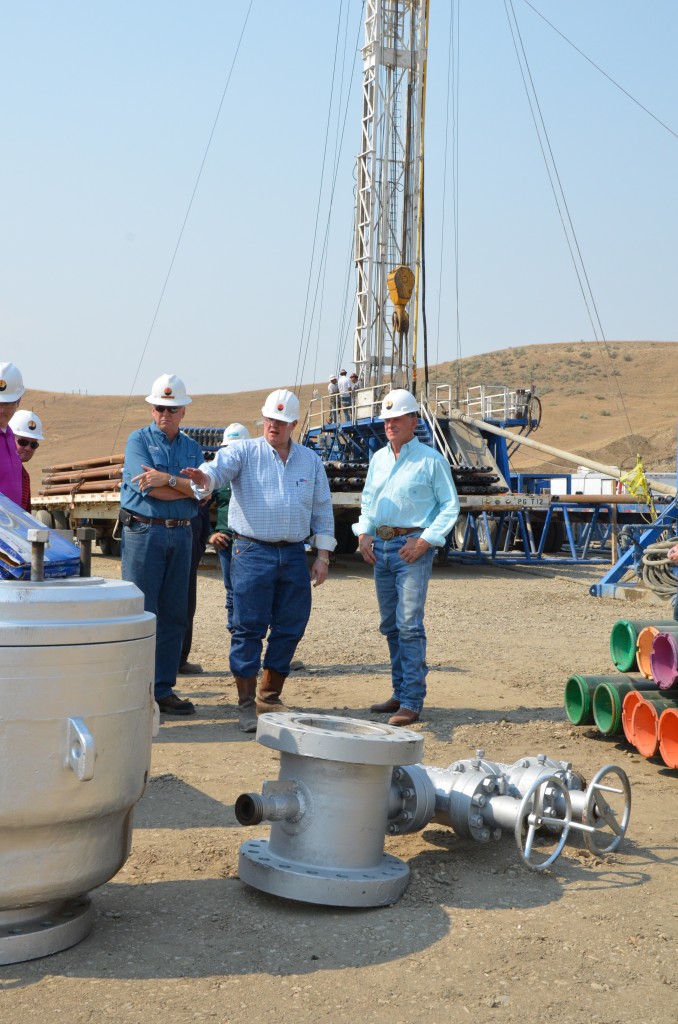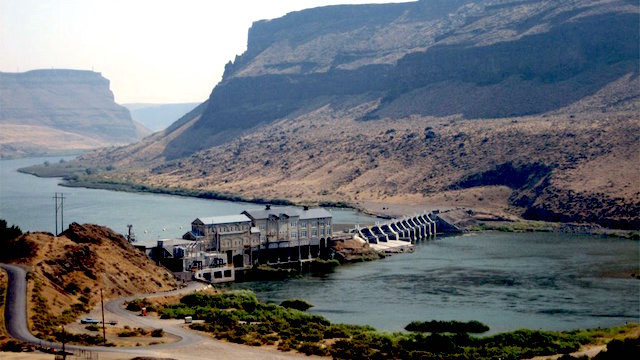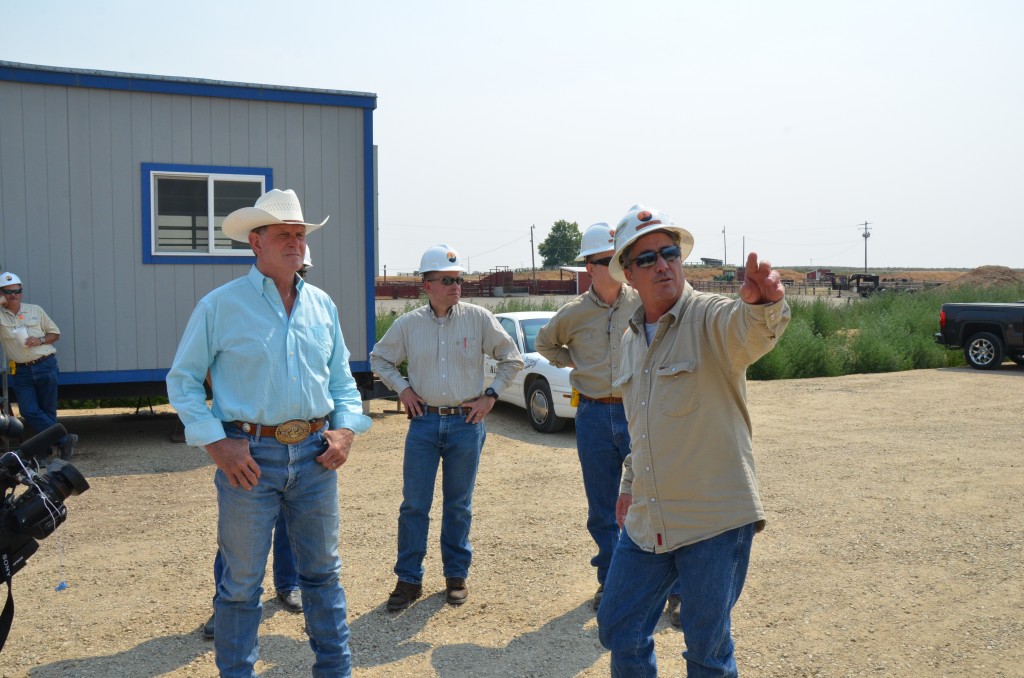If you ask people to name some energy producing areas in the U.S., the states that come up include Texas, North Dakota, Colorado, Pennsylvania, Wyoming, West Virginia and Louisiana.
No one says, “Idaho.”
But Idaho’s governor, C.L. “Butch” Otter, is hoping to change that perception. Otter is determined to attract oil and gas investment to Idaho. First step: he has begun the process to bring the state’s oil and gas regulations in-line with the best practices from around the country. Second: businesses who invest and create jobs in Idaho can qualify for state grants.
Idaho currently has no commercial oil or gas production, but fields in the state’s southwest are under development. The residential and industrial sectors are Idaho’s largest natural gas-consuming sectors, with slightly more than half of Idaho households using natural gas as their primary energy source for home heating, according to the Energy Information Administration (EIA). Petroleum is also a leading energy source in Idaho, but consumption per capita is far below the national median. Nearly four-fifths of petroleum is consumed in transportation with the rest used in the industrial sector.
Traditionally, Idaho’s energy demand has been supplied by renewables, with 58% of the state’s net electricity generation in 2013 coming from hydroelectric power, and another 20% coming from other forms of renewable energy, according to the EIA.
With so much of the state’s energy already coming from renewables, and a beautiful landscape that supports a robust $3.4 billion tourism industry, some people worried about inviting oil and gas development to Idaho. Earlier this week, an informational oil and gas meeting hosted by state officials was ringed by protesters holding signs with slogans like “Don’t Frack Idaho,” and “What about the Earthquakes,” according to The Argus Observer.
Most of the oil and gas resources in place in Idaho are being accessed through conventional drilling, not hydraulic fracturing. Many of the problems Idaho faces in developing its oil and gas industry, Otter told Oil & Gas 360® in this exclusive interview, can be resolved by dispelling misinformation.
Introduced legislation that will bring regulations in line
At the end of April, several bills were introduced into the Idaho legislature to bring Idaho’s regulations in-line with those in some of the powerhouse oil and gas states of the U.S. They included House Bill (HB) 50, which defines how oil and gas companies work together to best develop assets; HB 48, which allows companies to wait six months before disclosing their production records, and setting another six-month mark before those records become public; and HB 49, which sets application fees for oil and gas so that the Idaho Department of Lands (IDL) will cover the administrative costs of the applications, among others.
Oil & Gas 360® spoke with Governor Otter about his vision for developing Idaho’s oil and gas resources. Otter spoke about the importance of developing assets responsibly, learning from other states with developed oil and gas industries, battling misinformation, what Idaho is offering to the oil and gas industry, and his personal views on the U.S. crude export ban.
An Oil & Gas 360® exclusive interview with Idaho Governor Butch Otter
OAG360: Historically Idaho hasn’t had a whole lot of oil and gas industry development. Why is there a push for more now?
Idaho Governor Butch Otter: Well, Idaho has always had a lot of energy; we just haven’t had the carbon fuel. We’re enthusiastic about ourselves is what I’m saying. The fact that we found gas in Idaho was extremely energizing for us, let me put it that way.
Admittedly, when we first created it, our state land board doubled as the Oil and Gas Conservation Committee. There were five constitutional members on the land board for the state of Idaho, and with the exception of me, no one had ever drilled an oil well before.
Every time I drilled an oil well I found a gas well, and gas was so damn cheap, and there was no infrastructure to pick it up. So I was kind of the only one knew about it, but my technology was so old, it just didn’t apply to today’s needs.
So we’ve really been working for about the past six years to bring Idaho’s regulatory structure and infrastructure up to [meet] today’s needs, and meeting today’s application. We’ve studied a lot of other states–Wyoming amongst them, Colorado among them because they’ve all had to deal with these things. Then we created an Oil and Gas Commission, which has five members on it that I appoint, who all represent different aspects and stakeholders, including the public, in the development of exploration of gas and oil.
OAG360: The land board is set to release its new regulations in the near future. What are those going to look like compared to what Idaho has currently?
Otter: I wish I could tell you. Once again, we want to go with the state of the art in order to protect the environment, but also to make sure that we don’t do anything to discourage the growing interest in gas and oil development in Idaho. The Oil and Gas Commission will make the rules, bring them to the State land board and then we will have hearings before we decide how to deal with the legislative aspects.
OAG360: Can you tell me some more about the gas that you’re finding there in Idaho? I understand that you are not using hydraulic fracturing.
Otter: That’s right. We’re lucky because it is sweet gas and our first well was 4.2 million cubic feet per day, but we don’t have the infrastructure to support that right now. We’re working on getting it to the Williams pipeline, but we still have to de-water it a bit before we can put it into that pipeline.
OAG360: What is the importance of developing the oil and gas industry in Idaho?
Otter: Well, when business succeeds, Idaho succeeds. We are probably the premier state in “value-added.” Almost every farm commodity, every timber commodity, and everything we dig out of the ground, cut off the tree or grow on a farm, we try to add value to it. So we take potatoes and turn them into French fries, and we know that that takes about 27,000 Btu per pound of French fries. We cut trees and we make plywood, and we make tissue, and we make S4S lumber to the tune of about a billion board feet per year. That all takes energy. It takes about 285,000 Btu to make a sheet of of three-quarter-inch plywood.
OAG360: In 2013, about 85% of Idaho’s electrical generation came from renewables. How do you expect oil and gas to fit in to that picture?
Otter: They are going to take care of the peaks.
About 60% of our power comes from falling water in dams, and they offer us a lot of utility. Not only do they give us power, but they offer recreation with fishing, and they are important to irrigation as well. On top of that, we’ve added a lot of wind, and we’ve added some solar, but if the wind stops blowing, or the sun stops shining, then we need something else to meet our needs.
Where the gas comes in is when we need to meet that peak demand. We have built several twin-cycle gas turbines here in Idaho to help meet our peak needs. You can get them up and running in nothing flat to meet any additional electricity needs.
Tax Reinvestment Initiative: Idaho’s “Earn It Forward” program toward companies who invest capital and create jobs in Idaho
OAG360: What are you doing to attract oil and gas companies to Idaho?
Otter: We’re not just talking about dollars and cents here. We’re talking about building a new kind of workforce for the state of Idaho, new education requirements for the professionalism that we need for energy development, transportation and consumption. It’s a lot of different contributors to our economy.
We’ve got companies that are looking for geologists and engineers who can do a more efficient job at using energy resources. Doing more with less, that sort of thing.
The TRI
We have the Tax Reinvestment Initiative, the TRI. If a company is going to come into Idaho and hire 100 people, and capitalize $40-$50 million dollars, there is a certain reinvestment we will make into your company. We have an “earn it forward” attitude here. Once you’ve accomplished the hiring of those people, there’s a certain reinvestment that we will make into your company, a percentage of the income taxes, the sales taxes and the employee taxes that you pay in over a multiple of years. That way you can advertise your capital structure.
Idaho’s Grant Help Develop Infrastructure
Infrastructure is the main thing that we offer, though. If a company wants to move in to a municipality that doesn’t have the sewer hookup, or the utility lines or anything else like that, we have grants we can put in place through the cities and counties that will help build that infrastructure, so long as if there is any space in-between the city and where the plant is, we can develop that as well.
That includes highways, turn-lanes, water quality efforts that companies might need and so on. So if a company needs a waste-water plant, we can grant up to a certain amount of money to help them develop that.
OAG360: What obstacles are you working on overcoming to develop the oil and gas industry in Idaho right now?
Otter: Early on, there was a lot of concern about the practices that were being used, and I believe, a lot of disinformation. People knew that this was going to mean more wells drilled and some of them didn’t want to see more activity in the state. There were some folks out there, and there are probably still some out there, who had concerns about whether or not we were going to pollute their drinking water.
We control, through the state land board, roughly three million acres of land in Idaho. About 900,000 of that is forest and the rest is grazing land, which is desert, and all of that has some gas value underneath. The state of Idaho … is interested in that subsurface wealth, because of the lands it owns and controls under an endowing process with the public schools and eight other beneficiaries.
OAG360: What are you doing to combat that misinformation?
Otter: We call on the experts. First off, we’ll call on the accusers and say, “O.K. You’ve got an incident? Where? We’ll go and take a look at it.”
We don’t want to mess up the state. We don’t want to mess up anybody’s drinking water. We’ve got one aquifer here in Idaho, and we don’t want anything to happen to that. We want to protect the pristine nature of that water.
OAG360: How much revenue are you expecting Idaho might generate from the oil and gas industry?
Otter: You’re way ahead of me. I would tell you this, though: when you see the [amount of] capital and you see the interest that we’ve got [coming in], it tells me that it could be very substantial. If we do this right.
If we do it right, and we protect the environment and protect the water quality, then there’s no end that I could predict today where we would possibly stop. As long as we do it right and learn from other peoples’ mistakes.
OAG360: Where do you stand on the U.S. crude oil export ban?
Otter: Quite frankly, I think it’s a mistake.
If we could produce everything we are capable of producing, claims by certain federal government agencies not withstanding on how many licenses and how many permits they will issue and all that kind of stuff, we would produce a hell of a lot more crude than we could possible process.





